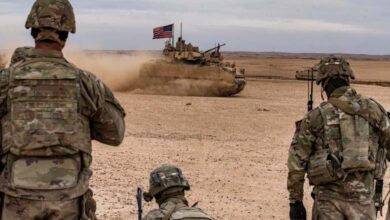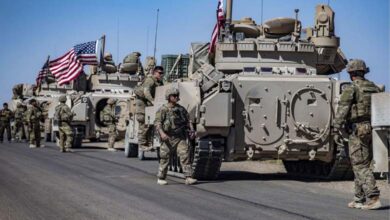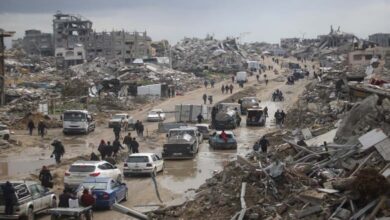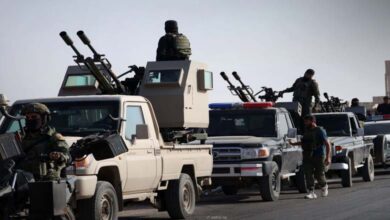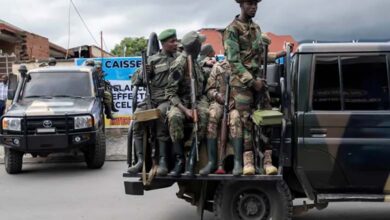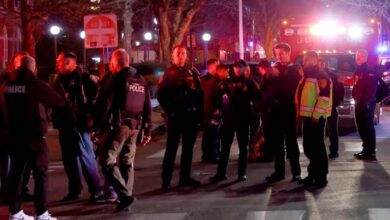Al-Nahda Sit-in: How the Muslim Brotherhood Turned the Square into Weapons Depots
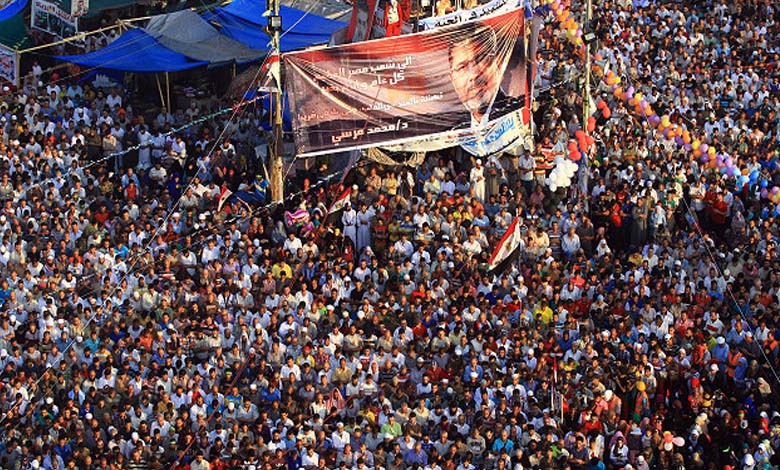
General Mostafa Rajai, former Assistant Minister of Interior for the Central Security Sector in Giza and the commander of the armed dispersal of the Al-Nahda Square sit-in, spoke about the scenes of the dispersal and how the terrorist group turned the Faculty of Engineering and Orman Garden into weapons depots. They also attempted to move the sit-in platform to Al-Hosary Square and Kerdasa. He said: “The return of the square to its current state disturbs the terrorist Muslim Brotherhood after they had turned it into a weapons depot.”
-
Did the Muslim Brotherhood aim to destroy the Egyptian identity? Details
-
From the Middle Leadership of the Muslim Brotherhood… Harsh Sentences Against a Brotherhood Cell Aimed at Striking the Egyptian Economy
General Rajai told the Egyptian website “Sout Al-Umma” about the terrorist Muslim Brotherhood‘s plan to move the Al-Nahda sit-in platform to Kerdasa and Al-Hosary Square. He described how the forces demolished the platforms and removed the microphones, saying: “At six in the morning on the day of the operation, we issued warnings through loudspeakers in four stages, with a 4-minute interval between each, allowing a safe exit through the passage we designated for protesters responding to the calls for peaceful dispersal. This passage led to Al-Giza Square, starting from the Saidiya School adjacent to Cairo University, and indeed, a large number of protesters exited.”
-
This is what Al-Ghamry revealed about the Muslim Brotherhood’s stance on reconciliation with the Egyptian regime
-
Wide Egyptian rejection of the European Parliament’s report on elections in Egypt: It serves the Muslim Brotherhood Agenda
He continued: “Our bulldozers moved to demolish the tents and structures they had erected after the protesters exited. At that time, we were met with heavy gunfire from inside the sit-in, from the top of the Faculty of Engineering and Orman Garden, in addition to the barricades and obstacles they placed in the path of the forces in the streets surrounding the sit-in during the entry of the armored vehicles. We used tear gas and deployed combat units, and our forces suffered casualties, including officers and soldiers. I remember Lieutenant Mahmoud Abdelaziz, one of the fallen. The clashes with the infiltration group lasted for a long time, and they took refuge in the Faculty of Engineering.”
-
The Egyptian-Turkish rapprochement puts the Muslim Brotherhood in a dilemma ahead of the Egyptian elections
-
The Muslim Brotherhood launches a preemptive campaign to cast doubt on the Egyptian presidential elections… Details
He added: “We managed to silence the gunfire and encircle them inside the faculty after closing the doors. Then we cleared all the streets, captured groups from within the tents in the streets, and cleared the Faculty of Engineering and Orman Garden of weapons. Orman Garden was filled with a large number of weapons and ammunition, as was Cairo University.”
-
Politicians Reveal: The Egyptian People Will Not Accept the Return of the Muslim Brotherhood
-
Dissident Muslim Brotherhood member: The group is facing major crises and confusion amid the Turkish-Egyptian rapprochement
The former Assistant Minister of Interior explained that during the sit-in dispersal, the forces seized enormous quantities of weapons and ammunition that the terrorist elements had managed to transport to the sit-in site inside coffins meant for the living. They would bring the coffin, claiming it contained a deceased person for prayer, and it would be wrapped in the flag of the Arab Republic of Egypt, while in reality, the coffin was filled with weapons that were inside the Faculty of Engineering.
-
The Muslim Brotherhood attempts to harm the Egyptian state through incitement against the government
-
How the Muslim Brotherhood Sabotaged the Educational System
According to Rajai, the forces took three weeks to gather them from the faculty and dismantle them. They also hid the weapons in a strange way inside Orman Garden, where they built toilets along the garden wall on the side of Al-Nahda Street towards Cairo University, and underneath, they hid these weapons to use against the forces during the dispersal. Most of the weapons they used were automatic, but some were imported from abroad and were in the hands of their leaders.


